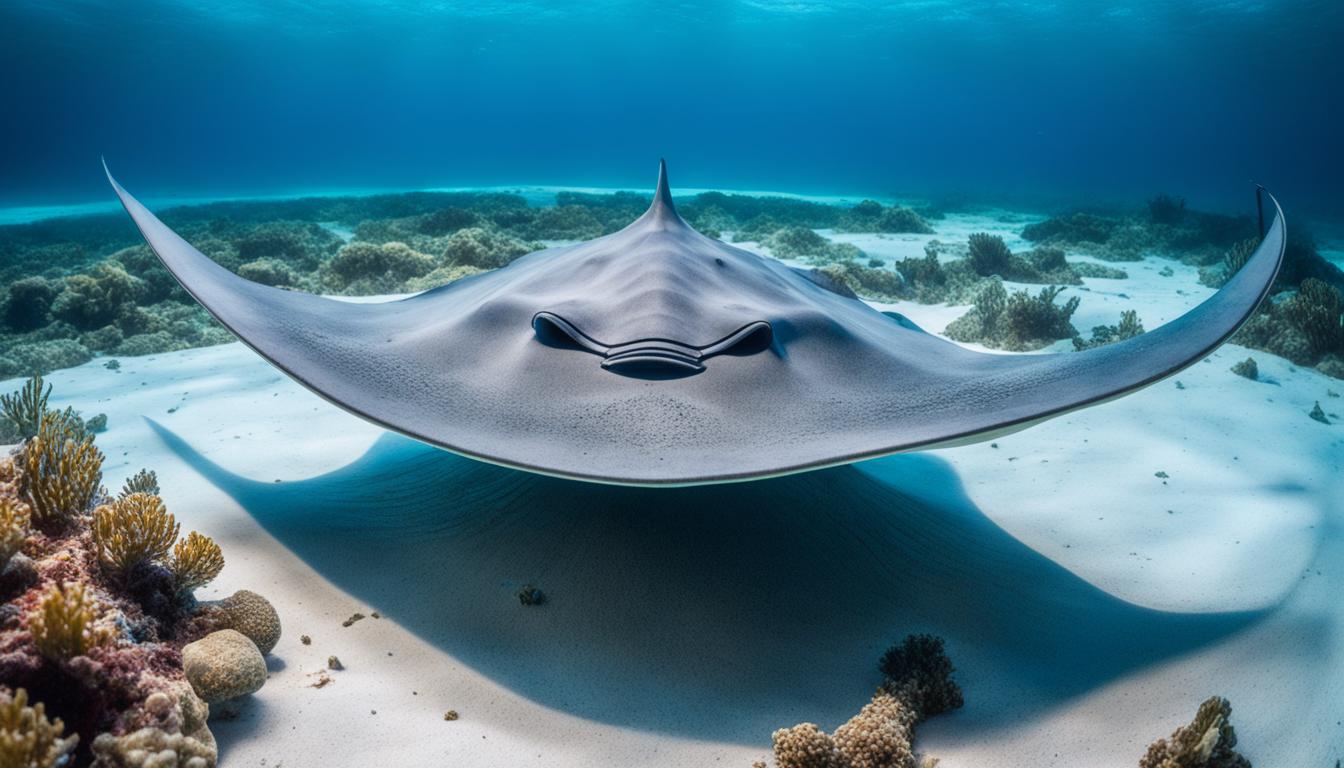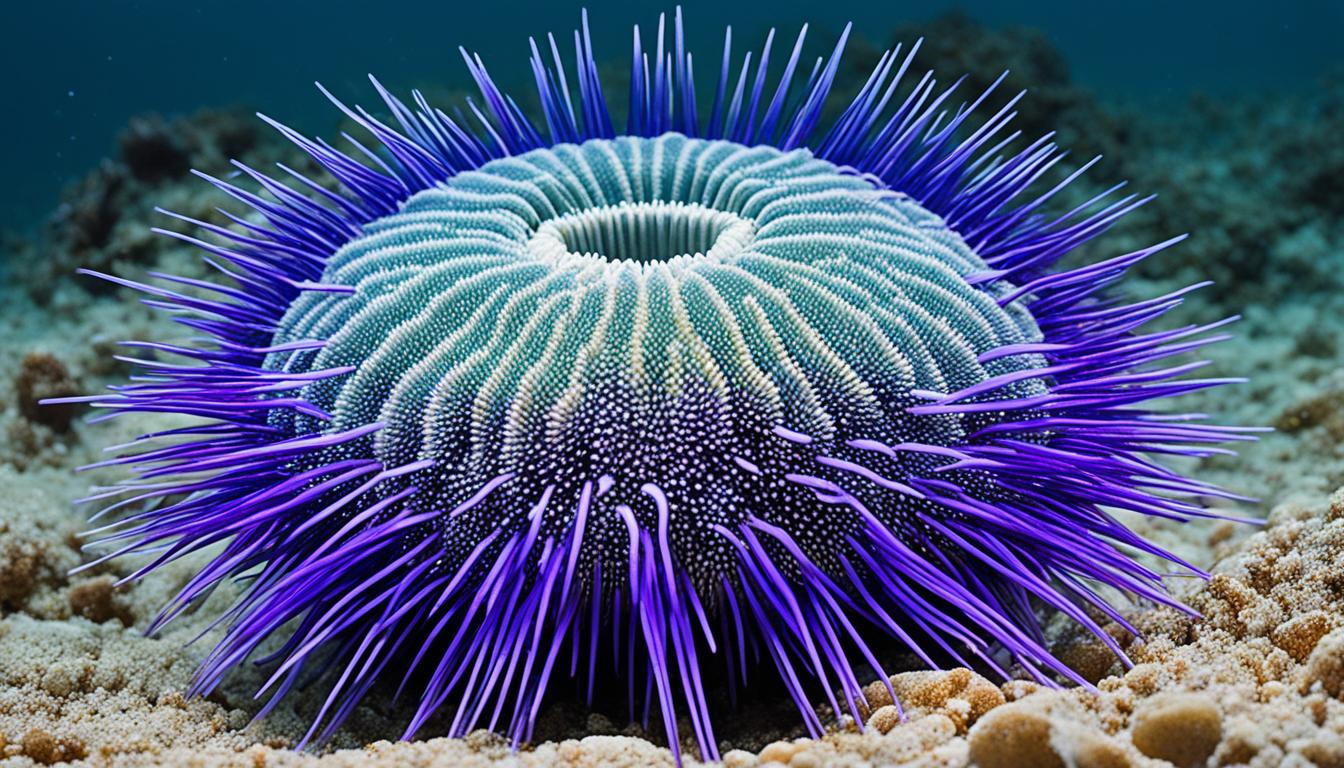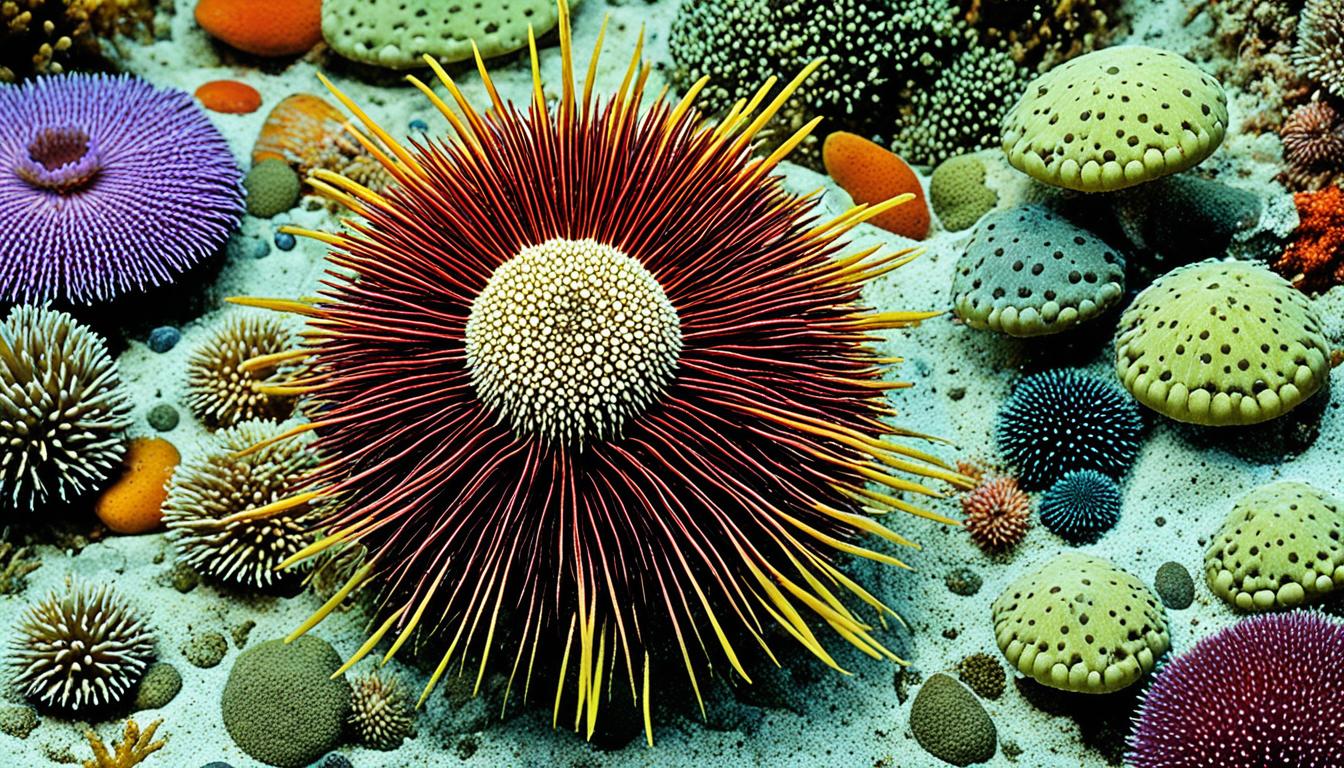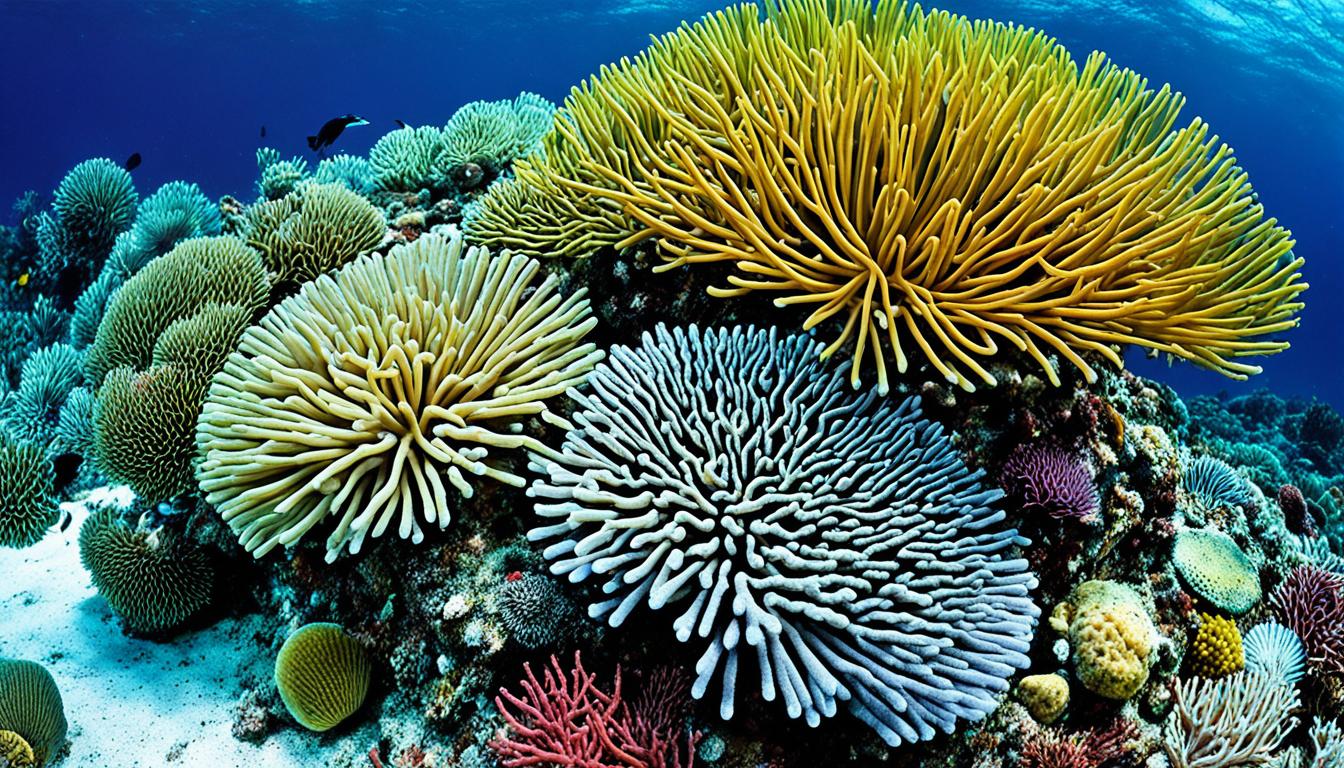Stingrays are often seen as gentle ocean creatures. But they have a sharp defense tool that can be quite aggressive when needed. It’s important to know how stingrays use their barbs, whether you’re a wildlife lover or someone who spends time at the beach. These barbs are key to their survival, helping them protect themselves from predators.
By looking into their anatomy and how they use their barbs, we can learn more about these fascinating sea creatures.
Understanding the Anatomy of Stingray Barbs
The anatomy of stingray barbs shows how nature designs things for defense. By looking closely, we see what makes them so good at protecting stingrays. This helps us understand how stingrays live and stay safe from predators.
Components of the Stingray Barb
The main parts of a stingray barb are:
- Serrated Edges: These sharp edges look like an arrowhead. They make the barb more deadly when it stings a predator.
- Venom Gland: At the barb’s base, this gland sends out venom. This makes the sting even more dangerous.
- Protective Sheath: The barb is covered by a sheath. This keeps it sharp and ready to use when needed.
Location and Structure
The stingray barb is found at the tail’s base. It’s a strong defense tool. Some barbs can grow up to 8 inches (20 cm) long. This lets them move fast and powerfully.
When a stingray feels threatened, it moves its tail. This sends the barb at the attacker. Knowing about stingray barbs shows how important they are for their survival.
The Function of the Stingray Barb
The main job of the stingray barb is to protect itself. Stingrays are not usually aggressive and try to avoid fights. If they feel threatened or get stepped on, they use their barb to scare off predators.
When the barb goes into the skin, it delivers venom. This venom is very painful and can cause tissue damage. It’s meant to stop the intruder so the stingray can get away.
This defense method is quite effective. It shows how well stingrays have adapted to protect themselves from threats.
How do stingrays use their barbs?
Stingrays use their barbs in a smart way to protect themselves. They have a special way to attack when they feel threatened. This method helps them defend and also stop threats from moving.
The Attack Mechanism Explained
When they feel danger, stingrays have a cool way to attack. They lift their tail over their body and then strike forward quickly. This action is similar to a scorpion’s sting. It lets them hurt their enemy while staying safe.
Delivery of Venom and Damage
When they sting, the barb goes through skin and soft tissue, causing a lot of harm. The barb’s sharp edges can make it stick in the wound. Then, the stingray’s venom comes out, making the pain worse and slowing healing. This mix of the wound and venom can make the injury even more severe.
Stingray Defense Mechanism in the Wild
Stingrays are fascinating animals often misunderstood because of their unique shapes and behaviors. They are generally peaceful and prefer to avoid fights. They hide in sandy seabeds to stay safe from predators. This helps them blend in with their surroundings.
When they feel threatened, stingrays try to swim away fast. But if they can’t escape, they use their barb for defense. They use their barbs to scare off bigger predators like sharks. This way, they protect themselves without attacking back.
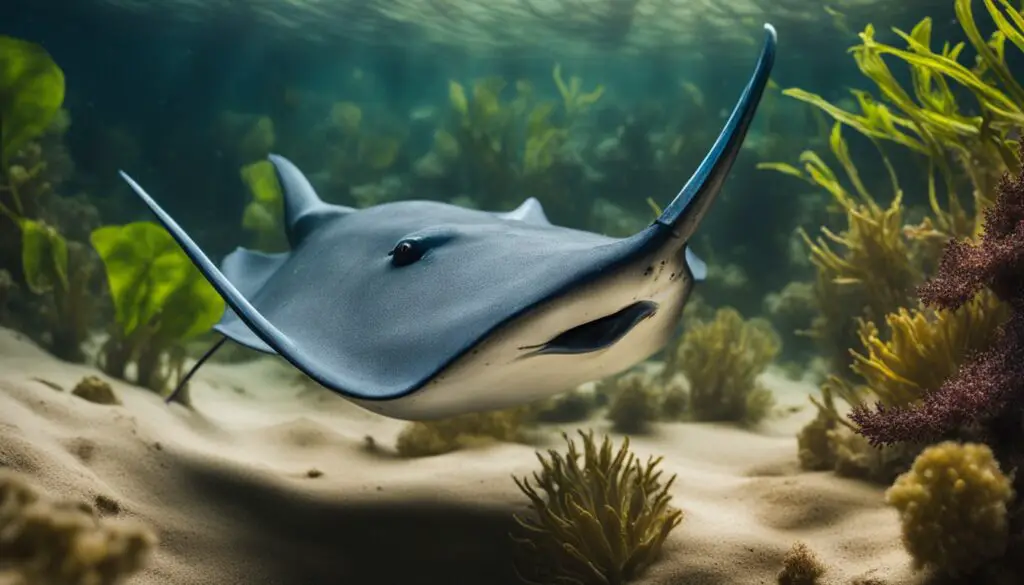
Stingrays in the wild are mostly peaceful but have a strong defense. They hide in sand when they sense danger. They stay calm until they need to use their barbs. This shows how they balance caution and readiness in defending themselves.
| Behavior | Response | Defense Mechanism |
|---|---|---|
| Threat Detected | Swim Away | Camouflage |
| Trapped | Deploy Barb | Stingray Defense Mechanism |
| Predator Approaching | Stay Still | Burrowing in Sand |
Stingrays use different strategies to stay safe in their home. They use camouflage and a strong defense. These ways show how they fit into their ecosystem and prefer peace over fighting.
Injuries Caused by Stingray Barbs
Stingray barb injuries often happen during fun activities near shallow water. Knowing when these can happen helps you stay safe.
Common Scenarios for Stingray Injuries
Swimming, wading, or fishing in places where stingrays live can lead to injuries. Stingrays are hard to see because they hide in the sand or murky water. Here are some common ways people get hurt:
- Stepping on a buried stingray while walking in shallow water.
- Wading during fishing, where stingrays may be startled and react defensively.
- Engaging in water sports near known stingray habitats without awareness of their presence.
Severity of Stingray Barb Injuries
The harm from stingray injuries can be different. It depends on how deep the barb went in and where it hit. Injuries can be mild or very serious. They can cause:
- Intense pain, often described as sharp or burning.
- Infection risks, particularly if not treated promptly.
- Severe complications, including damage to major organs if the barb penetrates deeply.
Getting medical help quickly is key to dealing with stingray barb injuries. It helps prevent serious problems and helps you heal right.
Stingray Barb Evolution and Adaptation
The evolution of the stingray barb shows how adaptations of stingray help them survive. These barbs are a defense against predators. Over time, they became venomous to protect stingrays from larger predators.
Stingrays have been perfecting their barbs for millions of years. This evolution is key to their survival. The venomous barbs help them defend against threats, ensuring they can live in changing environments.
Stingrays can regrow lost barbs, which is a unique adaptation. This ability keeps their defense strong throughout their lives. It shows how well stingray barbs have evolved for survival and balance in the ocean.
Stingrays play a big role in the ocean. They keep invertebrate populations in check and are food for bigger animals. The stingray barb evolution helps keep the ocean’s ecosystem balanced. This highlights the importance of these adaptations for marine life.
Conclusion
Learning about stingray barbs shows us a cool part of marine life. It tells us about their survival skills and their role in nature. Stingrays are usually calm, but their barbs help them defend against dangers in their home.
This knowledge makes us appreciate these amazing animals more. It’s important to know about stingray safety, especially if you love the sea. Knowing how stingrays act and where they live can help avoid getting hurt.
By being careful and aware, you can safely enjoy the ocean. This way, you keep yourself and stingrays safe. Understanding stingrays and their barbs helps us have good interactions with them. It also helps protect these incredible creatures and their homes.

